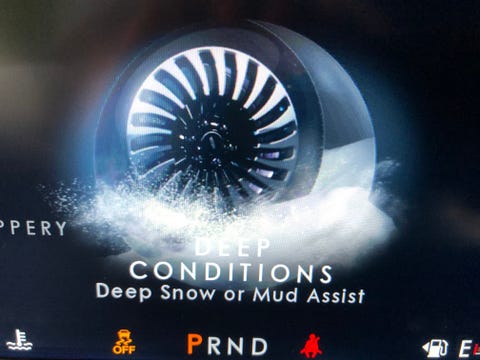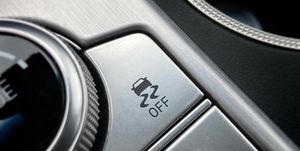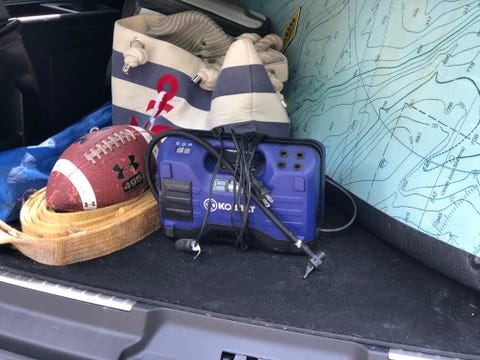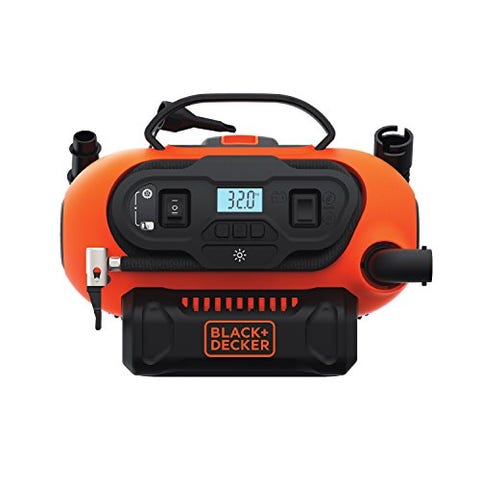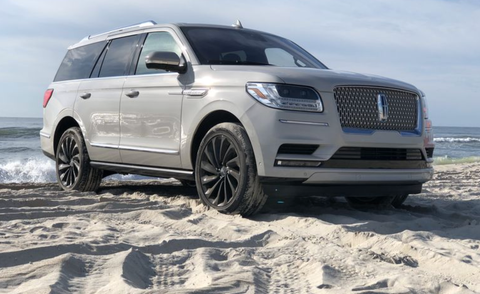It’s officially summertime. Which means that in certain locales around the country, it’s beach-driving season. Instead of piling your towels, umbrellas, bocce balls, Kan Jam, coolers and tubs of sunblock into a beach cart and hiring a team of oxen to drag it all from some distant parking lot to your chosen patch of sand, you simply leave everything in the car, buy a pass, and drive on out to find your personal slice of paradise. Beach driving imbues your summertime leisure with a dash of adventure—hey, look, this is why we bought the Pilot instead of the Odyssey! It’s also really convenient. Whichever spot you pick, all your gear is right there with you. But first, you have to get there.
Step 1: Get Your Settings Straight
I’ve spent some time out on the sand rescuing mired trucks and SUVs, and the most common problem is not lack of ground clearance or insufficiently gnarly tires. The problem is that the driver neglected to turn off traction and stability control. Those systems hate wheelspin and use either the brakes or throttle to slow spinning tires. Which, out on the beach, is exactly what you don’t want. You need to be able to use the throttle to maintain momentum, and that means some wheelspin is not only inevitable but desirable. Sir Isaac Newton said that when sand goes backward, your truck goes forward. But if you leave your traction control engaged, it’s like driving into a virtual tar pit as your vehicle slowly digs itself into a hole.
Every vehicle has a different means to kill the traction control. Sometimes it’s a simple button. In trucks with low-range 4WD (which you’ll want to use, if you have it), engaging 4Lo normally disables traction control. And fancier rigs—say, the 2020 Lincoln Navigator—usually have preprogrammed drive modes that correspond to the terrain. In the Navigator’s case, beach driving calls for “Deep Conditions,” where the throttle, transmission and stability control are instructed to keep the power flowing and those big tires churning.
Step 2: Air Down
On the street, you want your tires firm, for both fuel economy and safety. But on sand, an aired-up tire wants to cut through the sand—which is to say, sink down into it. With less tire pressure, though, the footprint expands, allowing the tire to ride up on top of the sand. It’s like a pizza wheel versus a rolling pin. And fortunately, even the lamest street tire can be radically improved simply by letting out some air.
So how do you do that? Well, I like to use a high-tech air removal tool called a “pebble.” Find a pointy little pebble, press it on the valve stem, and start bleeding pressure. There’s no need to hit a specific target or make sure all the tires are exactly the same pressure. There’s also no need to go straight to super-low pressure (like, 10 psi) right away. Maybe try 25 psi and see how your vehicle performs. That might be enough. And you can always air down further if you start to bog. Of course, tire pressure could be mandated, depending on the beach—in Currituck County, on North Carolina’s Outer Banks, you’re required to air down to at least 20 psi to drive on the beach.
Another factor to consider: the more you air down, the longer it’ll take to air back up. I always carry at least one portable air compressor, a Kobalt, but sometimes I double up with a spare Black and Decker that can also run off a 20-volt battery pack. If you can air up two tires at once, you get back on the road twice as quick.
Step 3: When In Doubt, More Throttle
The beach is no place to be tentative. Momentum is your friend, especially if you’re driving a crossover, which tend to be based on front-wheel-drive platforms. And while, say, a Chevy Traverse will have the ground clearance and traction to get you out on the beach, you should take sympathy on vehicles with all-wheel-drive systems that weren’t designed to constantly shunt power to the rear axle. Maintain a steady pace and stay in ruts to make sure you don’t overwork the clutches that send power rearward. (Ask me how I know.) Even if you’ve got a legit truck-based 4WD system, like the Navigator, it’s still a good idea to choose the path of least resistance and stay on the throttle. If you feel the tires chattering on the sand, stop and air down some more. The tires shouldn’t be fighting the surface.
At some point, you’ll have to park, which means leaving the safety of the ruts. Presuming you’ll park toward (but, please, above) the high-tide line, that means you carry some speed up away from the water, then reverse back down. If you can, try to drive perpendicularly far enough away from the water that you can use your own ruts when you get moving in reverse.
And that’s pretty much it. If you’re aired down, with ESC off and a confident throttle foot, even the tamest crossover should be game for a beach trip. One where the parking lot is wherever you decide to stop.
This content is created and maintained by a third party, and imported onto this page to help users provide their email addresses. You may be able to find more information about this and similar content at piano.io

